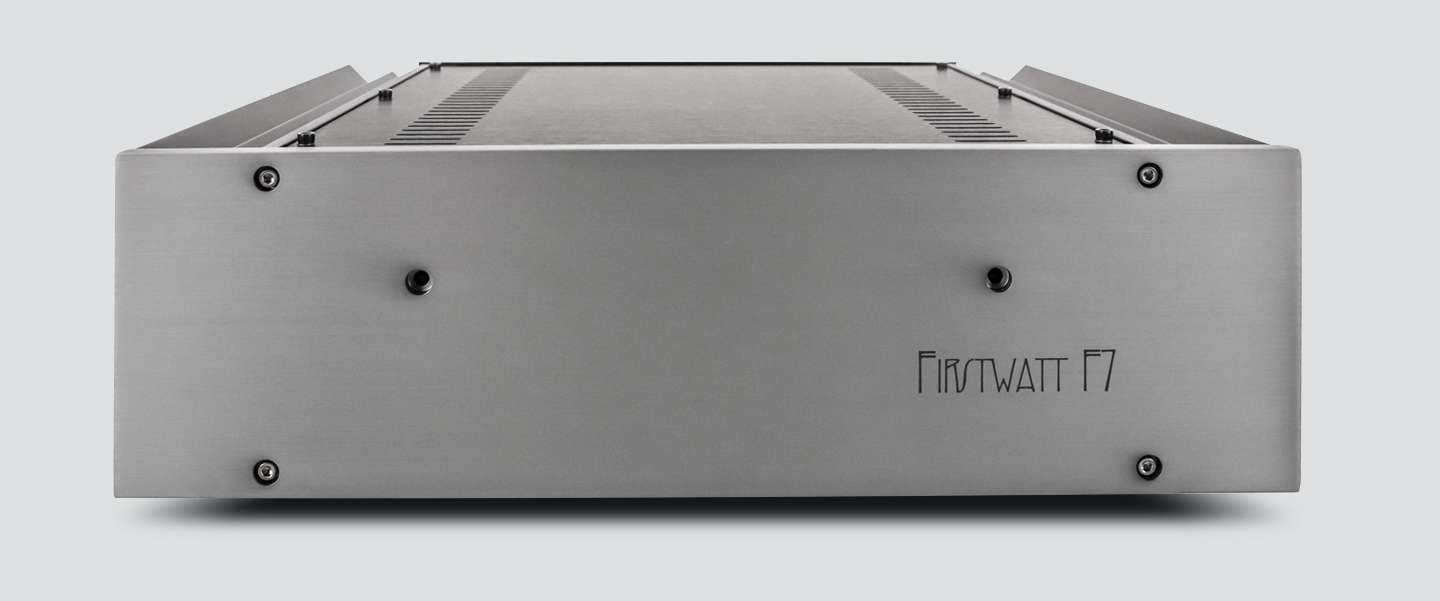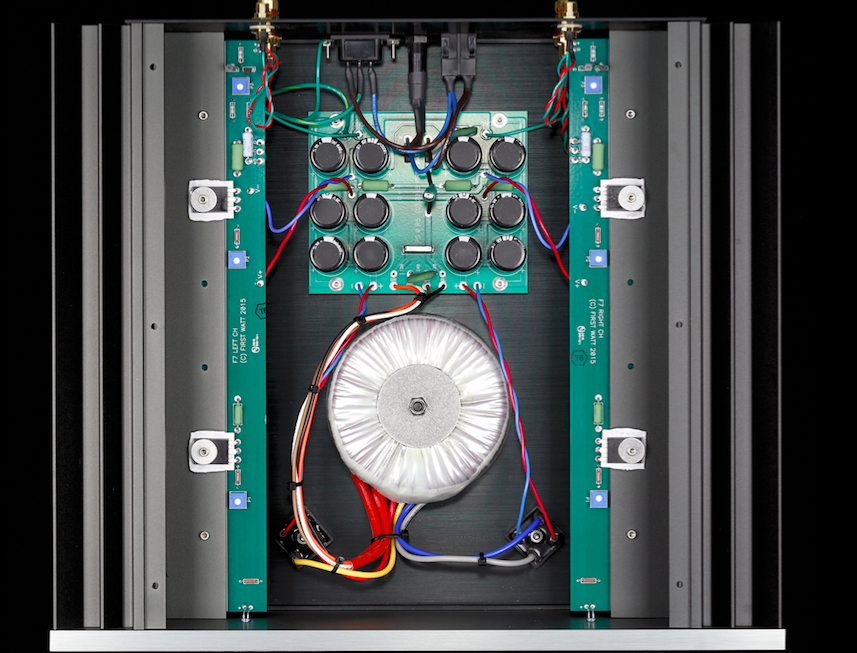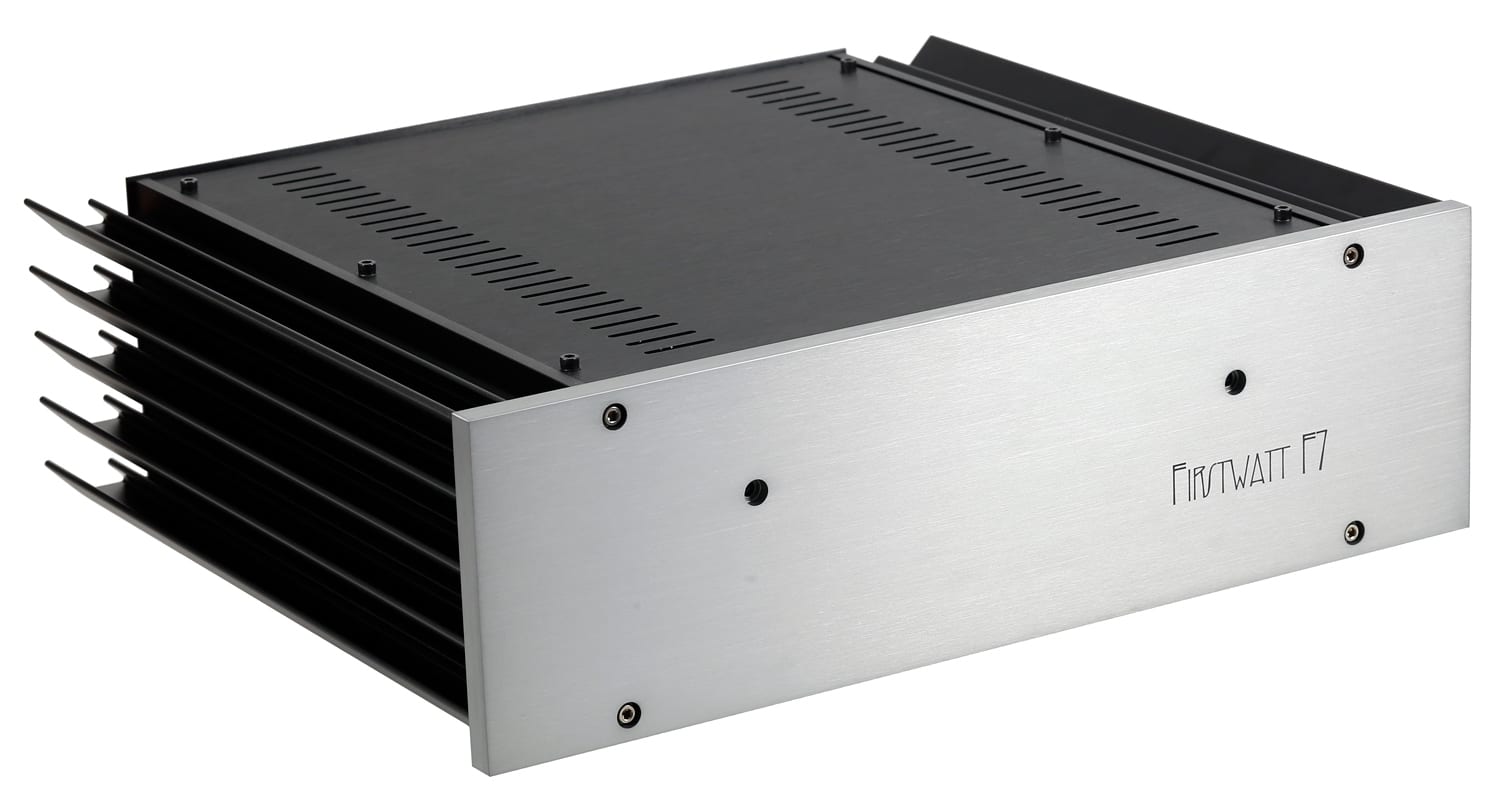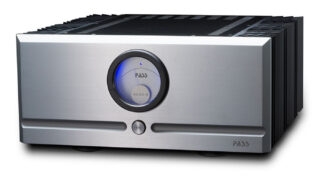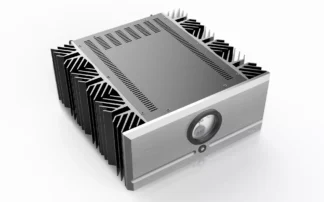Product Description
The Pass Labs First Watt F7 is a very unique power amplifier, a two-stage push-pull JFET/MOSFET topology with fewer parts than any First Watt amplifier to date and incorporating a very interesting balance of very low negative voltage feedback and a little bit of positive current feedback to give an astonishing measure of control over reactive loudspeaker loads.
Conceived in 2007, the F5 was a push-pull Class A amplifier employing eight semiconductors and 23 resistors to achieve 25 watts output with good specifications and good sound. You can read about it in detail in both the owner’s manual and DIY construction article, both posted at www.firstwatt.com The F5 received good reviews, sold well and received plenty of attention from the DIY audio community (as of this writing, the F5 thread on www.diyaudio.com is cresting 3 million views). Like other First Watt amplifiers, it was a limited release, and was discontinued after 100 pieces were built.
Subsequently there was a more powerful version released to the DIYers, the F5 Turbo, which offered more power and numerous options for experimentation. The F5 was noted for detail and neutrality, the result of simple Class A operation, wide bandwidth, and a generous amount of negative feedback. With some material and equipment, the sound was exquisite, but the amplifier also tended to highlight the faults of recordings and the rest of the system. A poorly engineered record, a second-rate DAC or peaky loudspeakers and the amplifier was merciless.Since then I have spent time mostly exploring other kinds of design approaches to amplifiers, but I always meant to come back to the F5 to see how it could be improved.
Mostly I was looking for two things – better sound and an even simpler circuit. The desire for a simpler circuit is self explanatory – apart from the aesthetic, I imagine that simpler circuits tend to sound better. (Because I build them myself, I will add cheapness and laziness to my motivations.) I envisioned a circuit with only four transistors and four resistors – the bare minimum for an amplifier of this type, where all the Fets are operated in Common-Source mode, giving both voltage and current gain.
Two complementary input Jfets drive two complementary power Mosfets, and the output voltage is fed back to the Source pins of the Jfets in what is commonly called “Current Feedback” (CFA). The schematic looked like this: In such a simple circuit, there are opportunities for improving performance by careful choice of transistors, resistor values, voltage and current values and precise matching of parts.
I built up a number of such amplifiers evaluating both the measurements and the sound, and after a while a very nice little amplifier emerged. That it (and the F5) resembled Plantefeve’s Profet was testament to his fine work.It had most of what was on my wish list: Very wide bandwidth Low distortion and noise Large Class A operating region Less feedback No degeneration in the output stage Very low thermal distortion and drift No capacitors or transformers (apart from the power supply) Looks like a great laundry list. I thought the amplifier sounded pretty good, but after a time the consensus was that it was kind of polite, not as musically involving as some other examples.
One area where the amplifier fell “objectively” short was the output impedance. Most of your “better” amplifiers have higher damping factors like 20 or 100, and this amplifier was only about 5 or so, typical of a simple Common-Source topology and low negative feedback. The damping factor, which is the inverse of the output impedance, determines the flatness of the amplifier response when the load impedance varies and is important to the transient response of reactive loudspeakers, which is just about all of them. You could argue that single-ended tube amplifiers sound good and don’t have much damping factor, and you would be right, but I’m not trying to duplicate single-ended tube amplifiers here – the First Watt SIT amplifiers, doing a decent solid-state emulation of Triodes, represent that genre nicely.
I’m shooting more for the sound of The Beast With a Thousand JFETs but with obtainable parts. I tried other Fets, varied the the feedback network values and tweaked the gain symmetry. These efforts delivered a little more warmth and dimensionality, and about a year ago I decided to go ahead and build a small pilot run in anticipation of a product release – after all, it was a perfectly nice amplifier. Still, I was not really satisfied, so I created new printed circuit board artwork, adding cascode operation to the input stage and doubling up the output devices. This version had a little more control, but still fell short.



